This post may contain affiliate links. Please read my privacy policy.
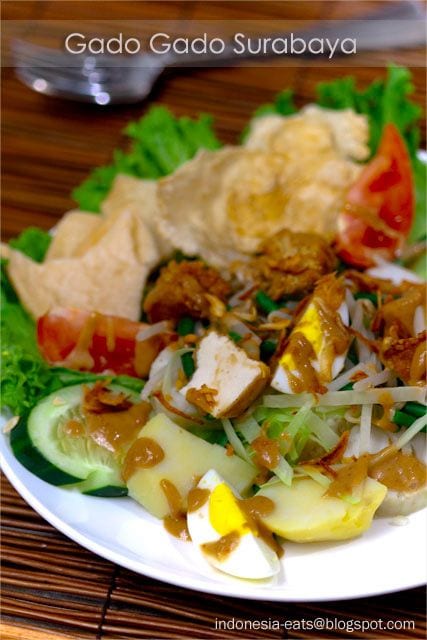

FREE EMAIL BONUS:
5 Secrets to 20 Minute Dinners!
Tips, tricks, and recipes for dinner in a hurry!
The best way to learn about a new cuisine is from those born and raised in that country, and that’s why I have Pepy of Indonesia-Eats as the guest writer for Indonesian food today. Pepy is the first Indonesian food blogger I know and I’ve since learned so much about Indonesian cuisine from her blog at Indonesia-Eats.In this guest post, Pepy explains the different preparations of Gado-gado and shares with us her recipe. Please welcome her to Rasa Malaysia.
Gado-Gado Surabaya
Guest Writer: Indonesia-Eats (The Art and Science of Food)
To begin with, I was surprised that Rasa Malaysia has chosen me to be the guest writer of Indonesian cuisine on her blog. Rasa Malaysia is one of my inspired blogs among the Asian specialty blogs.
We share the same passion for Asian food as we came from the same region, Malay Peninsula where Bahasa Indonesia and Bahasa Malaysia are from the same language root. Some of the food terms are the same, few are different.
Gado-gado is one of the well-known dishes from Indonesia. Gado-gado literally means “mix mix” since gado-gado is the plural word of gado, so gado-gado means mixes. In Indonesia, gado-gado is not a salad dish group, it is a one dish meal.
Speaking about gado-gado in Indonesia, several different numbers of gado-gado were developed based on the region. I was born and grew up in East Java province and I left the province for my school to West Java province… this experience had brought me to taste different styles of gado-gado.
In East Java (around Surabaya), we call it Gado-gado Siram or Gado-gado Surabaya. Siram means pour as we order the food, the seller will place the ingredients (lontong, blanched vegetables, steamed potatoes, boiled eggs, tempe, tofu, etc.) on a plate and then pre-made gado-gado sauce is poured over, garnish with fried shallots and top with crackers (melinjo nuts and shrimp crackers).
While in West Java (around Bandung and Bogor), the sellers will combine ground peanuts and spices, grind them in a mortar and pestle, add the cooked vegetables, mix them together, and transfer into a plate.
Another style of gado-gado that I relish is gado-gado boplo from Jakarta. Boplo is an area in Jakarta where this style of gado-gado can be found. What is the difference between gado-gado siram and boplo? Gado-gado siram uses peanuts while Gado-gado Boplo uses cashew nuts.
In addition, Gado-gado has carbohydrate supply from lontong and potatoes. Tempeh, tofu and eggs are the protein sources. Last but not least, the vegetables.
Gado-gado can be made for pescetarianisms or pesco vegetarianisms who still consume fish and seafood; it can also be consumed by lacto-ovo vegetarians who include eggs and dairy products in their diet.
Also, you can go for vegan by omitting dried shrimp paste (Indonesian: terasi/trassi, Malay: belachan/belacan) in gado-gado sauce and shrimp cracker, and skipping the egg. By leaving out the shrimp crackers, gado-gado is totally safe for people with celiac disease that can’t have any wheat in their diet.
In this post, I contribute an authentic recipe of Gado-gado Surabaya or Gado-gado siram, it might be pretty intimidating with the long list of ingredients, but it will be worth it.
How Many Calories per Serving?
This recipe is only 602 calories per serving.
What Dishes to Serve with This Recipe?
For a wholesome meal and easy weeknight dinner, I recommend the following recipes.
For more great recipes like this, sign up for our newsletter. We’ll send daily recipes you’ll love!
Sign up for our newsletter!
Gado-Gado Surabaya Recipe (Gado-Gado Siram)
Ingredients
- Blanched/steamed vegetables
- long green beans (cut into 4-5 cm long (2 inches))
- Chinese cabbage (shredded)
- Bean sprouts
Fresh Vegetables:
- Lettuce
- Tomato (wedged)
- Cucumber (sliced)
Other Complements:
- Boiled/steamed potatoes (sliced)
- Boiled eggs (wedged)
- Fried/baked tempe
- Fried/baked tofu
- Lontong (rice cake with log shape, cut into 1 cm thick)
- Ready-to-use fried shallot
- Melinjo nuts crackers
- Shrimp crackers
Gado-gado sauce:
- 10 cloves garlic (stir fried/fried/roasted)
- 300 g (10 oz) roasted/fried peanuts (In this case, I used 1 cup of organic crunchy peanut butter)
- 1000 ml coconut milk
- 10 red chilies (discard the seed and stir fried/fried)
- 1 teaspoon terasi (dried shrimp paste, toasted)
- 1 block coconut sugar (62 g)
- 2-3 tablespoons rice flour (dissolve in a small amount of water)
Sambal:
- 20 red bird eyes chilies (boiled /steamed)
- 1/2 teaspoon sugar
- Sea salt (as desired)
Instructions
Gado-Gado Sauce
- Process garlic, peanuts/peanut butter, a half part of coconut milk, red chilies, terasi, coconut sugar in a food processor or blender.
- In a sauce pot, combine processed mixture with the rest of coconut milk, stir and turn on the stove at low-medium heat. Stir occasionally.
- Cook the sauce until boiled, the volume reduced, and the sauce surface looks a bit oily. Add rice flour mixture. Keep stirring until bubbling, about 5 minutes. Remove from the heat.
Sambal
- Combine all ingredients and process in a food processor/blender, or you can grind them with mortar and pestle.
Serving
- Place lettuce, slices of lontong and boiled potatoes, blanched vegetables, wedges of boiled egg, slices of fried tempe and tofu, and wedges of tomato, slices of cucumber. Pour the warm sauce over, garnish with fried shallot, crushed shrimp crackers and emping nuts crackers. Put sambal on the side as people has different tastebuds to handle the spiciness. You can omit the sambal if you don't like the spicy sauce.
Notes
- Always try the sauce before remove from the heat, so you can add salt or coconut sugar to match your tastebuds.
- Serve gado-gado sauce while it is still warm. Warm up the sauce if it is cold.
- If you still have leftover sauce, keep it in a jar and refrigerate/freeze. You may use for other dipping purposes.
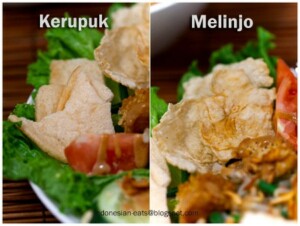 Glossary:
Emping Melinjo: Melinjo or padi oats crackers
Glossary:
Emping Melinjo: Melinjo or padi oats crackersLontong: Rice cake with log shape
Kerupuk/krupuk Udang: shrimp crackers
Tempe/Tempeh: Indonesian fermented soy bean cake
Terasi/Trassi: dried shrimp paste
Nutrition
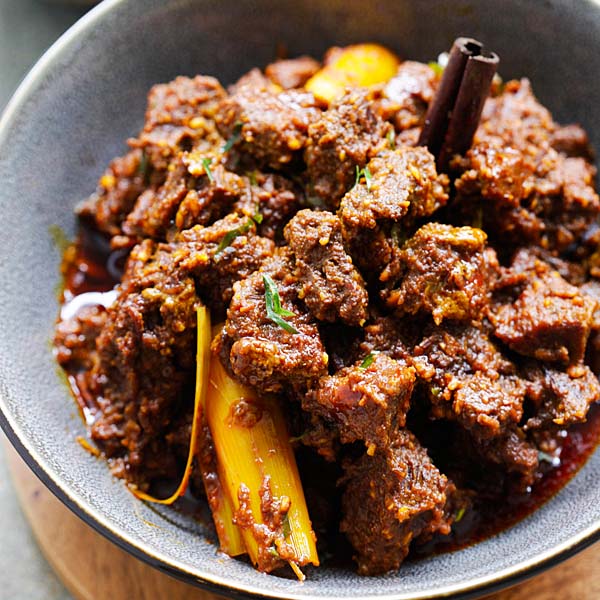
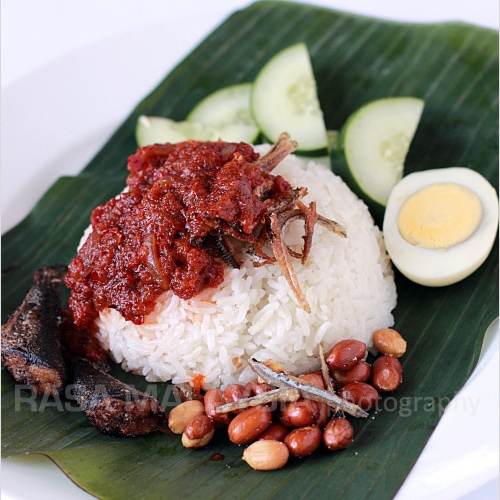
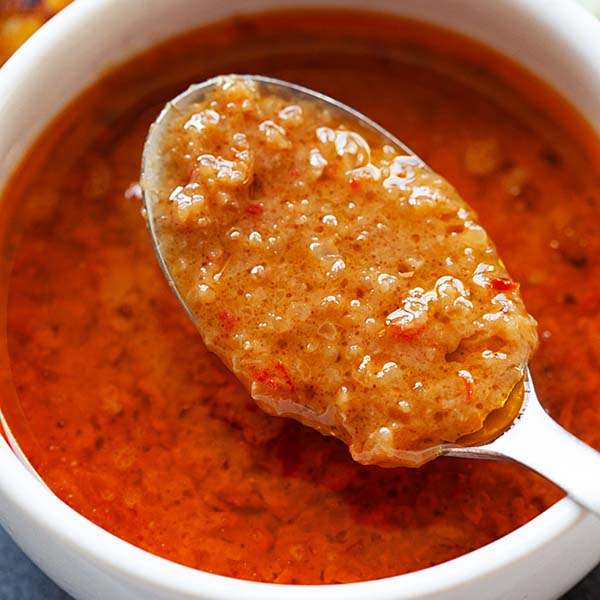
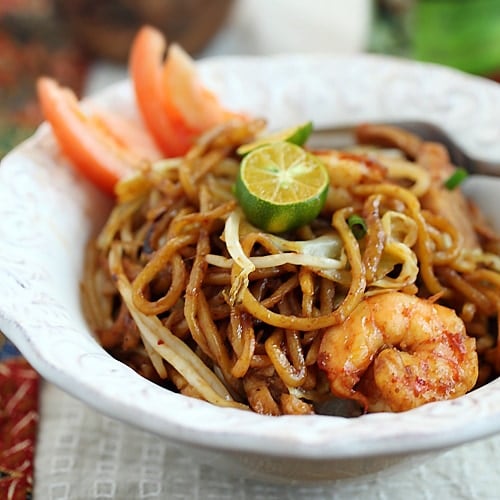
Is Gado Gado a popular dish in Malaysia?
Yes.
Thank you Pepy.
I wanted an authentic recipe and am pleased I found this!
I thought the author of the recipe was going to be Pepy. So is this your recipe or Pepy’s? I also do not remember seeing tomatoes in Gado-gado…..
This is a guest post by Pepy.
I was just confused, because the author of the recipe is shown as Bee/Rasa Malaysia. Since I am a librarian, “an author is essentially the person who originates the idea, plot, or content of the work being written.”
I have guest posts from contributors. The site will always default to me as the author. The contributor’s name is clearly stated in the beginning of the post.
You must be real fun at parties.
I love all the Indonesian food I’ve had, and many years later I still fondly remember the first time I ever had Gado-Gado. I definitely want to make this.
nice food
Rasa, question – while the vegetables are steamed or fried, is the dish served warm, or cold, or room temperature? And, can the component parts be cooked in advance and assembled a few hours later, or should it all be freshly cooked? If Lotong is not avaiable, would there be a suggested substitute,or best to just leave it out?
Yes, you can the dish should be served room temperature. Yes you can cook in advance.